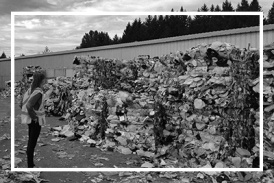AGII Deploys Intelligent Security Systems to Strengthen Decentralized Integrity
New AI-powered security framework enhances blockchain resilience and reinforces trust in Web3 systems
SEATTLE, WA, UNITED STATES, May 1, 2025 /EINPresswire.com/ -- AGII, a pioneering force in the AI and Web3 space, today announced the deployment of intelligent security systems designed to fortify decentralized networks against emerging threats. This development marks a significant leap in the platform’s ongoing mission to create secure, adaptive infrastructure for the next generation of blockchain ecosystems.AGII’s new security framework leverages advanced AI models that provide continuous real-time monitoring, predictive risk detection, and autonomous threat response. These systems are engineered to address the evolving complexity of decentralized environments, ensuring that vulnerabilities are identified and neutralized before they can be exploited. By integrating these AI-driven solutions, AGII enhances both the speed and trustworthiness of smart contract operations.
The newly deployed tools offer scalable protection for developers and enterprises building on Web3. From anomaly detection to automated compliance reinforcement, AGII’s intelligent security ecosystem proactively manages blockchain stability without compromising decentralization. The technology is particularly effective in addressing challenges associated with high-volume activity, cross-chain operations, and permissionless environments.
With this launch, AGII continues to lead the charge in redefining blockchain infrastructure by merging AI with decentralized principles. The platform’s secure-by-design philosophy sets a new benchmark for integrity and dependability in the fast-paced world of Web3.
About AGII
AGII is an advanced AI-powered Web3 platform focused on optimizing decentralized infrastructure through intelligent automation, predictive models, and scalable blockchain tools. AGII equips developers, enterprises, and users with the resources to build secure, adaptive, and high-performing decentralized applications.
Dorothy Marley
KaJ Labs
+ +1 707-622-6168
email us here
Legal Disclaimer:
EIN Presswire provides this news content "as is" without warranty of any kind. We do not accept any responsibility or liability for the accuracy, content, images, videos, licenses, completeness, legality, or reliability of the information contained in this article. If you have any complaints or copyright issues related to this article, kindly contact the author above.
Critter Stop Offers Permanent Solutions to Homes and Businesses with Launch of Pest Control in Richardson, Texas
Protection Tax Helps Clients Resolve Unfiled Returns Before IRS Action Escalates
leagend T31 Sets New Standard for Affordable and Accurate OBD II Diagnostics
Kalendarium
Więcej ważnych informacji
 Jedynka Newserii
Jedynka Newserii

 Jedynka Newserii
Jedynka Newserii

Handel

Ze względu na różnice w cenach surowce wtórne przegrywają z pierwotnymi. To powoduje problemy branży recyklingowej
Rozporządzenie PPWR stawia ambitne cele w zakresie wykorzystania recyklatów w poszczególnych rodzajach opakowań. To będzie oznaczało wzrost popytu na materiały wtórne pochodzące z recyklingu. Obecnie problemy branży recyklingu mogą spowodować, że popyt będzie zaspokajany głównie przez import. Dziś do dobrowolnego wykorzystania recyklatów nie zachęcają przede wszystkim ceny – surowiec pierwotny można kupić taniej niż ten z recyklingu.
Przemysł spożywczy
Rośnie presja konkurencyjna na unijne rolnictwo. Bez rekompensat sytuacja rolników może się pogarszać

Rolnictwo i żywność, w tym rybołówstwo, są sektorami strategicznymi dla UE. System rolno-spożywczy, oparty na jednolitym rynku europejskim, wytwarza ponad 900 mld euro wartości dodanej. Jego konkurencyjność stoi jednak przed wieloma wyzwaniami – to przede wszystkim eksport z Ukrainy i niedługo także z krajów Mercosur, a także presja związana z oczekiwaniami konsumentów i Zielonym Ładem. Bez rekompensat rolnikom może być trudno tym wyzwaniom sprostać.
Transport
Infrastruktury ładowania elektryków przybywa w szybkim tempie. Inwestorzy jednak napotykają szereg barier

Liczba punktów ładowania samochodów elektrycznych wynosi dziś ok. 10 tys., a tempo wzrostu wynosi ok. 50 proc. r/r. Dynamika ta przez wiele miesięcy była wyższa niż wyniki samego rynku samochodów elektrycznych, na które w poprzednim roku wpływało zawieszenie rządowych dopłat do zakupu elektryka. Pierwszy kwartał br. zamknął się 22-proc. wzrostem liczby rejestracji w ujęciu rocznym, ale kwiecień przyniósł już wyraźne odbicie – o 100 proc.
Partner serwisu
Szkolenia

Akademia Newserii
Akademia Newserii to projekt, w ramach którego najlepsi polscy dziennikarze biznesowi, giełdowi oraz lifestylowi, a także szkoleniowcy z wieloletnim doświadczeniem dzielą się swoją wiedzą nt. pracy z mediami.









.gif)

 |
| |
| |
|